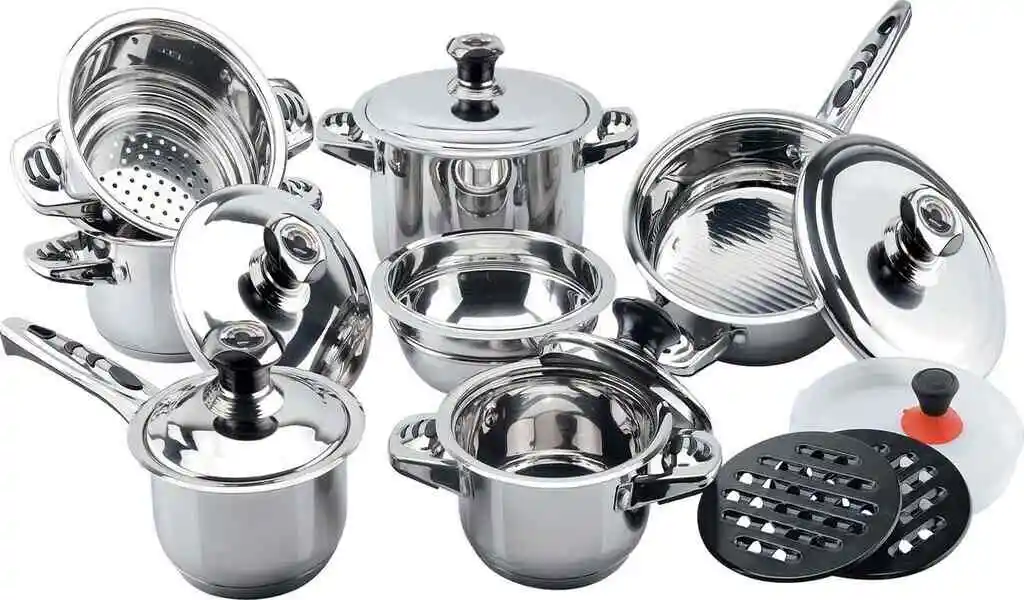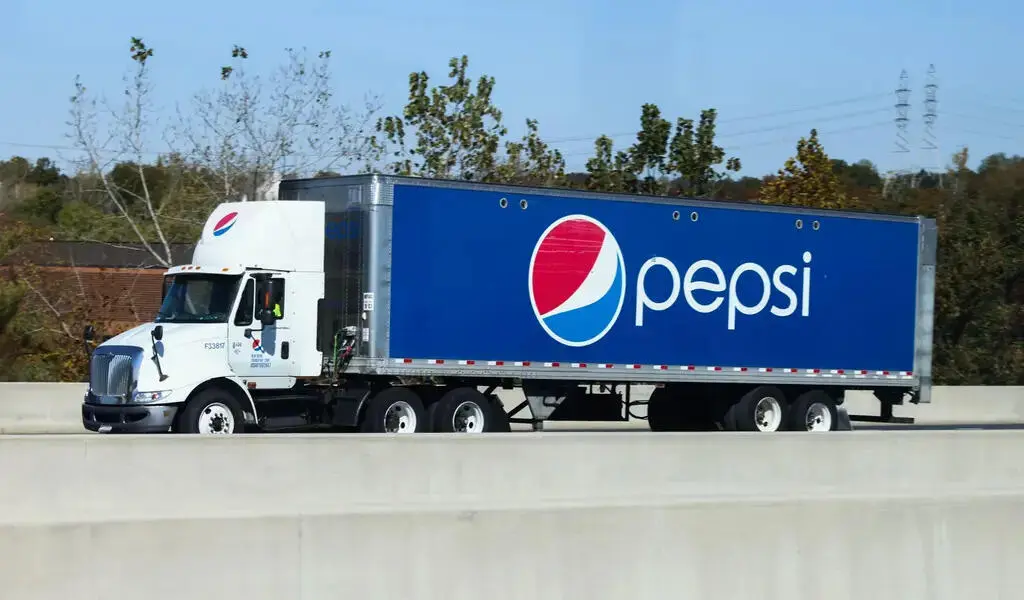Top 5 Kitchenware – Kitchenware Materials That Will Keep You and Your Family Healthy

Once you prepare food for your dear ones, you make certain that you use the freshest ingredients, frying medium, veggies, spices, or anything else that will make the meal more nutritious and tastier. Moreover, how often do we take into account the utensils we use when cooking? If you haven’t already noticed, the kitchenware you are using for cooking has a significant major effect on the meals you cook in it. In this article, we’ll go over some of the best kitchen tools to use which can be found in Cookinglife, a trustworthy cookware brand.
What Kinds of Cooking Utensils Are Best?
If you don’t pay attention to the kitchenware you use to make food for your family, there could be a slew of health risks lurking. Here are some of our best cooking cookware suggestions, as well as some of the healthiest utensils for cooking:
1. Stainless Steel
Stainless steel is among the most easily available as well as the best cooking vessels to keep in mind. It not only allows you to cook a large variety of dishes, and it also holds around 60 to 70% of the nutritional content of the food. However, avoid purchasing stainless steel utensils that have been coated with chromium and nickel, as these may pose health risks.
2. Cast Iron
Cast iron is indeed a long-lasting as well as durable metal that could be used for preparing meals. When you make food in a cast iron cookware, slight amounts of iron mooch from the cookware; although, this is healthy for us. Although, if you are diagnosed with Hemochromatosis, stop preparing food with these utensils. Present cast iron utensils have a safe protective layer to lower iron leaching; these utensils are also nicer and easier to care for.
3. Glass
Glassware is without a doubt one of the healthiest kitchen utensils to use when cooking. Glass is indeed a non-reactive item, which means it does not release toxic materials into the food getting cooked, nor will it capture nutrition from its food. The only con is that it is mainly used for baking. Glass is a non-reactive substance, which means that it does not release toxic components into the meals being made, nor does it acquire any nutrition from its food. Cookinglife has a wide collection of glass cookware available on the website.
4. Brass
When it comes to food, brass is an excellent material since the food made in such cookware holds up to 90% of its nutritional value. Brass equipment is excellent for conserving the most nutrition in the meals that have been cooked. The only con of using this cookware is cleaning them as extra care must be taken when washing such utensils. Furthermore, if the dish is too acidic, don’t cook it in such cookware.
5. Bronze
Bronze is also a very healthy cooking material, but still, it tends to retain nearly 97 % of the nutritional ratio of the food. Moreover, be wary of any metal or nickel that may have been added to such utensils, as this could pose a health risk. Buying genuine bronze cookware from a known or trustworthy source like Cookinglife is a better option.
6. Clay Pots
Clay heats up slowly, which helps mostly in the preservation of the food’s available nutrients. The main drawback of using clay pots would be that they take more time to cook than other metals. Also, buy acrylic pots instead of glazed ones since the latter may contain toxic substances that will be released during the cooking time.
Whereas cooking in some types of utensils adds extra nutritional benefits, some metals may face health risks if you make meals in them including Ceramic, Aluminium, Granite, and Non-stick cookware. These elements slowly enter the human body, causing mental and neurological disorders.
The Bottom Line
We hope you found this article useful in knowing why some kitchenware should be used whereas others must be avoided totally. Pick your cookware wisely so that both you and your family can enjoy healthy meals from your kitchen. The above-mentioned cooking materials are easily available on Cookinglife at affordable prices and of the best quality!
People Are Also Read:
Food Tracking: Why Should You Track Your Food?
Heardle Answer Today – #13 Daily Song March 10th 2022
Top Food Trends to Look Out for 2022

News
Trudeau’s Gun Grab Could Cost Taxpayers a Whopping $7 Billion

A recent report indicates that since Trudeau’s announcement of his gun buyback program four years ago, almost none of the banned firearms have been surrendered.
The federal government plans to purchase 2,063 firearm models from retailers following the enactment of Bill C-21, which amends various Acts and introduces certain consequential changes related to firearms. It was granted royal assent on December 15 of last year.
This ban immediately criminalized the actions of federally-licensed firearms owners regarding the purchase, sale, transportation, importation, exportation, or use of hundreds of thousands of rifles and shotguns that were previously legal.
The gun ban focused on what it termed ‘assault-style weapons,’ which are, in reality, traditional semi-automatic rifles and shotguns that have enjoyed popularity among hunters and sport shooters for over a century.
In May 2020, the federal government enacted an Order-in-Council that prohibited 1,500 types of “assault-style” firearms and outlined specific components of the newly banned firearms. Property owners must adhere to the law by October 2023.
Trudeau’s Buyback Hasn’t Happened
“In the announcement regarding the ban, the prime minister stated that the government would seize the prohibited firearms, assuring that their lawful owners would be ‘grandfathered’ or compensated fairly.” “That hasn’t happened,” criminologist Gary Mauser told Rebel News.
Mauser projected expenses ranging from $2.6 billion to $6.7 billion. The figure reflects the compensation costs amounting to $756 million, as outlined by the Parliamentary Budget Office (PBO).
“The projected expenses for gathering the illegal firearms are estimated to range from $1.6 billion to $7 billion.” “This range estimate increases to between $2.647 billion and $7 billion when compensation costs to owners are factored in,” Mauser stated.
Figures requested by Conservative MP Shannon Stubbs concerning firearms prohibited due to the May 1, 2020 Order In Council reveal that $72 million has been allocated to the firearm “buyback” program, yet not a single firearm has been confiscated to date.
In a recent revelation, Public Safety Canada disclosed that the federal government allocated a staggering $41,094,556, as prompted by an order paper question from Conservative Senator Don Plett last September, yet yielded no tangible outcomes.
An internal memo from late 2019 revealed that the Liberals projected their politically motivated harassment would incur a cost of $1.8 billion.
Enforcement efforts Questioned
By December 2023, estimates from TheGunBlog.ca indicate that the Liberals and RCMP had incurred or were responsible for approximately $30 million in personnel expenses related to the enforcement efforts. The union representing the police service previously stated that the effort to confiscate firearms is a “misdirected effort” aimed at ensuring public safety.
“This action diverts crucial personnel, resources, and funding from tackling the more pressing and escalating issue of criminal use of illegal firearms,” stated the National Police Federation (NPF).
The Canadian Sporting Arms & Ammunition Association (CSAAA), representing firearms retailers, has stated it will have “zero involvement” in the confiscation of these firearms. Even Canada Post held back from providing assistance due to safety concerns.
The consultant previously assessed that retailers are sitting on almost $1 billion worth of inventory that cannot be sold or returned to suppliers because of the Order-In-Council.
“Despite the ongoing confusion surrounding the ban, after four years, we ought to be able to address one crucial question.” Has the prohibition enhanced safety for Canadians? Mauser asks.
Illegally Obtained Firearms are the Problem
Statistics Canada reports a 10% increase in firearm-related violent crime between 2020 and 2022, rising from 12,614 incidents to 13,937 incidents. In that timeframe, the incidence of firearm-related violent crime increased from 33.7 incidents per 100,000 population in 2021 to 36.7 incidents the subsequent year.
“This marks the highest rate documented since the collection of comparable data began in 2009,” the criminologist explains.
Supplementary DataData indicates that firearm homicides have risen since 2020. “The issue lies not with lawfully-held firearms,” Mauser stated.
Firearms that have been banned under the Order-in-Council continue to be securely stored in the safes of their lawful owners. The individuals underwent a thorough vetting process by the RCMP and are subject to nightly monitoring to ensure there are no infractions that could pose a risk to public safety.
“The firearms involved in homicides were seldom legally owned weapons wielded by their rightful owners,” Mauser continues. The number of offenses linked to organized crime has surged from 4,810 in 2016 to a staggering 13,056 in 2020.
“If those in power … aim to diminish crime and enhance public safety, they ought to implement strategies that effectively focus on offenders and utilize our limited tax resources judiciously to reach these objectives,” he stated.
Related News:
Millennials in Canada Have Turned their Backs on Justin Trudeau
Millennials in Canada Have Turned their Backs on Justin Trudeau
World
Russian Arms Dealer Viktor Bout Back in Business After Biden Prisoner Exchange

Viktor Bout, the infamous Russian arms dealer who was exchanged two years ago for Brittney Griner by President Biden, has reportedly returned to arms trading, as detailed in a report by the Wall Street Journal.
The Wall Street Journal has revealed that Vikto Bout, infamously dubbed the “merchant of death,” is seeking to facilitate the sale of small arms to the Houthis. A report indicates that Houthi representatives met with Bout in Moscow in August to discuss the acquisition of $10 million in automatic weapons.
Nonetheless, the anticipated arms deal remains unfulfilled, as indicated by the report.
Reports indicate that the weapons being discussed do not encompass larger systems such as anti-ship or anti-air missiles, which could represent a considerable risk to U.S. military operations in the area.
Requests for comment from the WSJ regarding Bout’s alleged involvement in the arms trade went unanswered by the Kremlin and Russia’s Ministry of Defense. Steve Zissou, an attorney who provided legal representation for Bout during his time in U.S. custody, refrained from commenting on the possibility of Bout’s meetings with the Houthis.

Viktor Bout, the notorious Russian arms dealer was exchanged for Brittney Griner – CNN Image
Viktor Bout released in 2022
Bout, who became affiliated with Russia’s Kremlin-loyal Liberal Democratic Party following his release in a prisoner swap in December 2022, has kept a low profile since his return.
Bout was taken into custody in Thailand in 2008 and subsequently extradited to the United States, where he faced conviction in 2012 on charges associated with arms trafficking, resulting in a 25-year prison sentence.
For almost twenty years, Bout stood out as one of the globe’s most notorious arms dealers, providing weaponry to unrecognized governments and insurgent factions throughout Africa, Asia, and South America. The activities he conducted served as the basis for the 2005 film Lord of War.
Even after his conviction and imprisonment, reports indicate that Bout’s network persisted in its operations, contributing to conflicts in some of the globe’s most perilous areas.
Related News:
Former US Marine Paul Whelan Released From Russian Prison
Business
PepsiCo Reduces Revenue Projections As North American Snacks And Key International Markets Underperform.

(VOR News) – In the third quarter of this year, Pepsi’s net income was $2.93 billion, which is equivalent to $2.13 per share. This was attributed to the company.
This is in stark contrast to net income of $3.09 billion, which is equivalent to $2.24 per share, during the same period in the previous year. The company’s earnings per share were $2.31 when expenses were excluded.
Net sales decreased by 0.6%, totaling $23.32 billion. Organic sales increased by 1.3% during the quarter when the effects of acquisitions, divestitures, and currency changes are excluded.
Pepsi’s beverage sales fell this quarter.
The most recent report indicates that the beverage and food sectors of the organization experienced a 2% decline in volume. Consumers of all income levels are demonstrating a change in their purchasing habits, as indicated by CEOs’ statements from the previous quarter.
Pepsi’s entire volume was adversely affected by the lackluster demand they encountered in North America. An increasing number of Americans are becoming more frugal, reducing the number of snacks they ingest, and reducing the number of times they purchase at convenience stores.
Furthermore, Laguarta observed that the increase in sales was partially attributed to the election that occurred in Mexico during the month of June.
The most significant decrease in volume was experienced by Quaker Foods North America, which was 13%. In December, the company announced its initial recall in response to a potential salmonella infection.
Due to the probability of an illness, the recall was extended in January. Pepsi officially closed a plant that was implicated in the recalls in June, despite the fact that manufacturing had already been halted.
Jamie Caulfield, the Chief Financial Officer of Pepsi and Laguarta, has indicated that the recalls are beginning to have a lessening effect.
Frito-Lay experienced a 1.5% decline in volume in North America. The company has been striving to improve the value it offers to consumers and the accessibility of its snack line, which includes SunChips, Cheetos, and Stacy’s pita chips, in the retail establishments where it is sold.
Despite the fact that the category as a whole has slowed down in comparison to the results of previous years, the level of activity within the division is progressively increasing.
Pepsi executives issued a statement in which they stated that “Salty and savory snacks have underperformed year-to-date after outperforming packaged food categories in previous years.”
Pepsi will spend more on Doritos and Tostitos in the fall and winter before football season.
The company is currently promoting incentive packets for Tostitos and Ruffles, which contain twenty percent more chips than the standard package.
Pepsi is expanding its product line in order to more effectively target individuals who are health-conscious. The business announced its intention to acquire Siete Foods for a total of $1.2 billion approximately one week ago. The restaurant serves Mexican-American cuisine, which is typically modified to meet the dietary needs of a diverse clientele.
The beverage segment of Pepsi in North America experienced a three percent decrease in volume. Despite the fact that the demand for energy drinks, such as Pepsi’s Rockstar, has decreased as a result of consumers visiting convenience stores, the sales of well-known brands such as Gatorade and Pepsi have seen an increase throughout the quarter.
Laguarta expressed his opinion to the analysts during the company’s conference call, asserting, “I am of the opinion that it is a component of the economic cycle that we are currently experiencing, and that it will reverse itself in the future, once consumers feel better.”
Additionally, it has been noted that the food and beverage markets of South Asia, the Middle East, Latin America, and Africa have experienced a decline in sales volume. The company cut its forecast for organic revenue for the entire year on Tuesday due to the business’s second consecutive quarter of lower-than-anticipated sales.
The company’s performance during the quarter was adversely affected by the Quaker Foods North America recalls, the decrease in demand in the United States, and the interruptions that occurred in specific international markets, as per the statements made by Chief Executive Officer Ramon Laguarta.
Pepsi has revised its forecast for organic sales in 2024, shifting from a 4% growth rate to a low single-digit growth rate. The company reiterated its expectation that the core constant currency profitability per share will increase by a minimum of 8% in comparison to the previous year.
The company’s shares declined by less than one percent during premarket trading. The following discrepancies between the company’s report and the projections of Wall Street were identified by LSEG in a survey of analysts:
SOURCE: CNBC
SEE ALSO:
Old National Bank And Infosys Broaden Their Strategic Partnership.
-

 News3 years ago
News3 years agoLet’s Know About Ultra High Net Worth Individual
-
Entertainment2 years ago
Mabelle Prior: The Voice of Hope, Resilience, and Diversity Inspiring Generations
-

 Health4 years ago
Health4 years agoHow Much Ivermectin Should You Take?
-

 Tech2 years ago
Tech2 years agoTop Forex Brokers of 2023: Reviews and Analysis for Successful Trading
-

 Lifestyles3 years ago
Lifestyles3 years agoAries Soulmate Signs
-

 Movies2 years ago
Movies2 years agoWhat Should I Do If Disney Plus Keeps Logging Me Out of TV?
-

 Health3 years ago
Health3 years agoCan I Buy Ivermectin Without A Prescription in the USA?
-

 Learning3 years ago
Learning3 years agoVirtual Numbers: What Are They For?